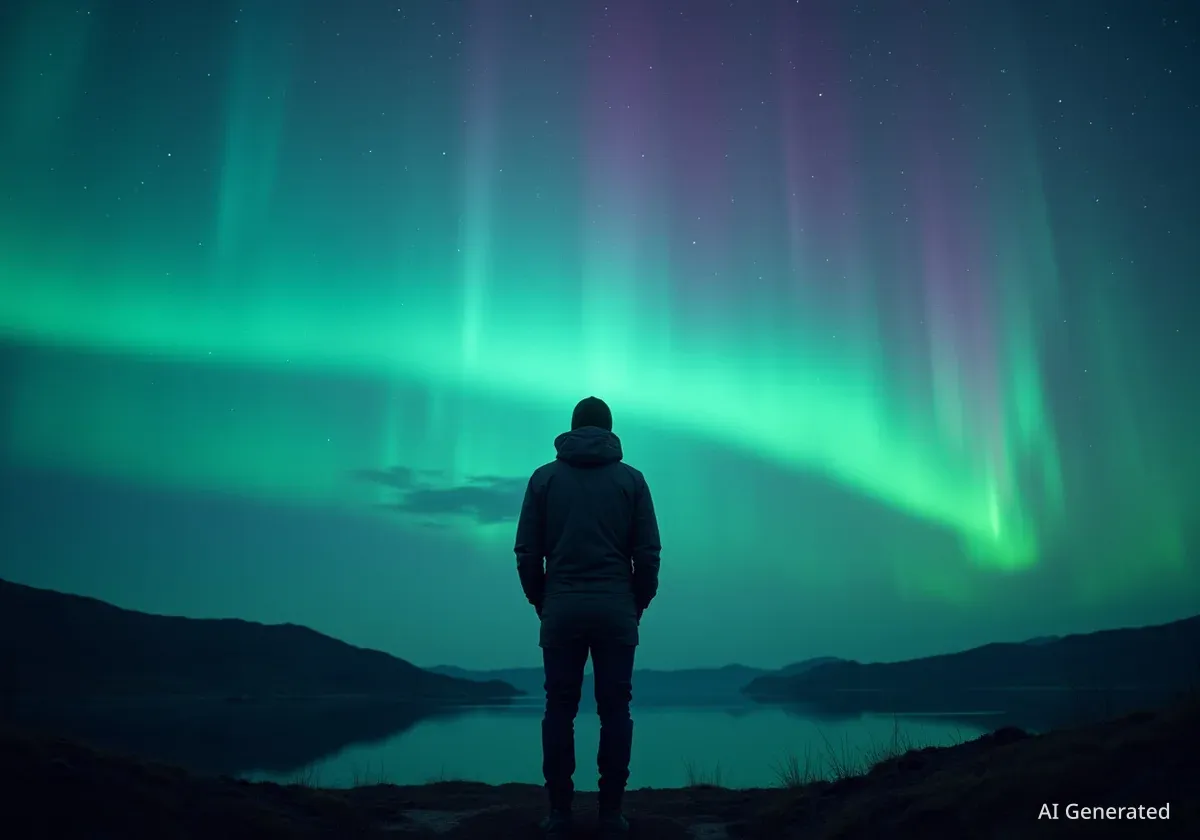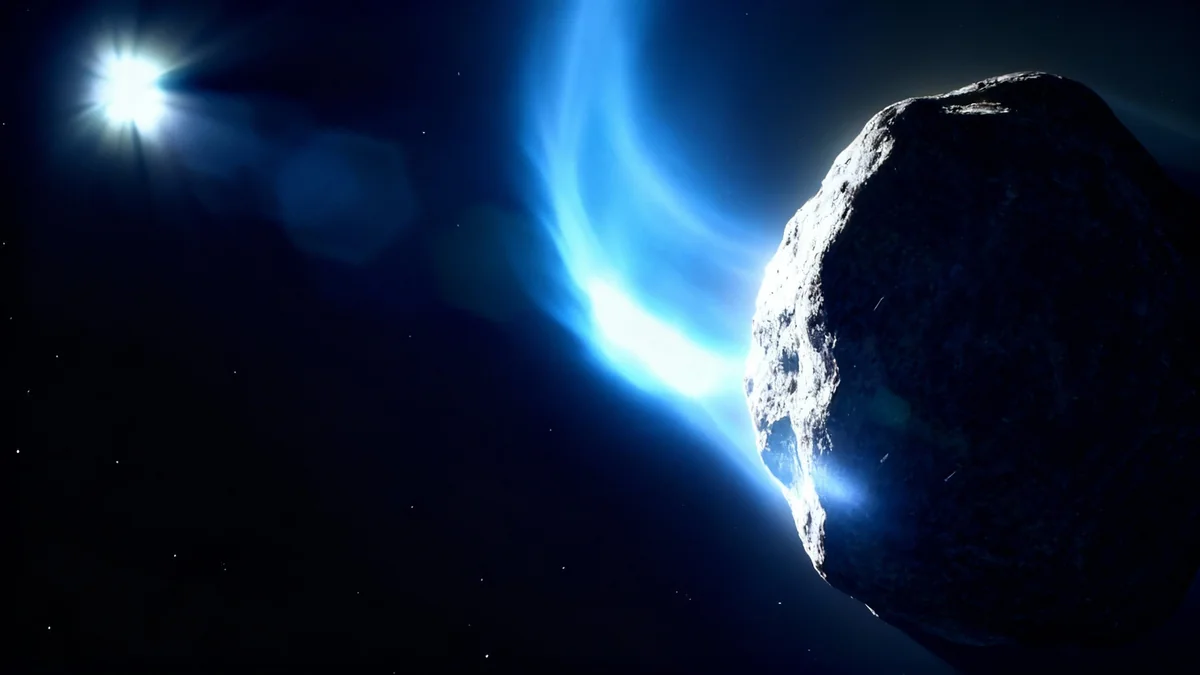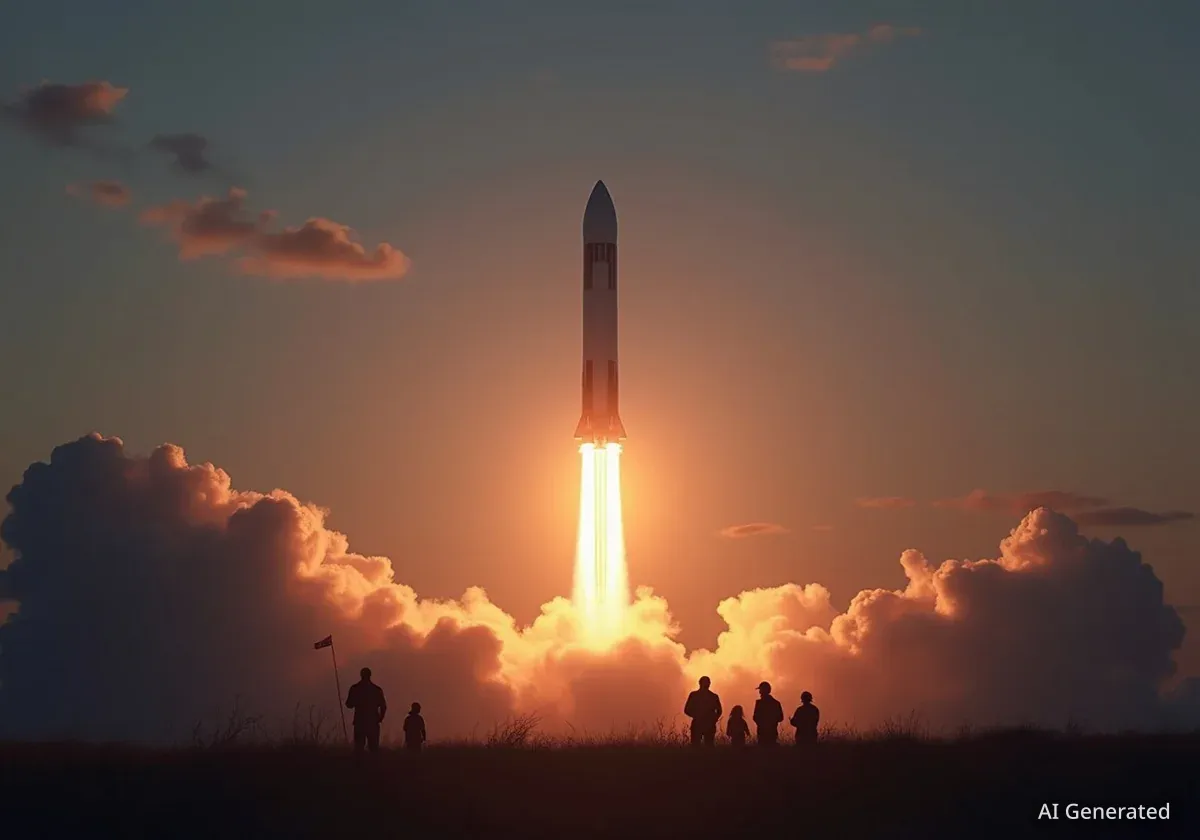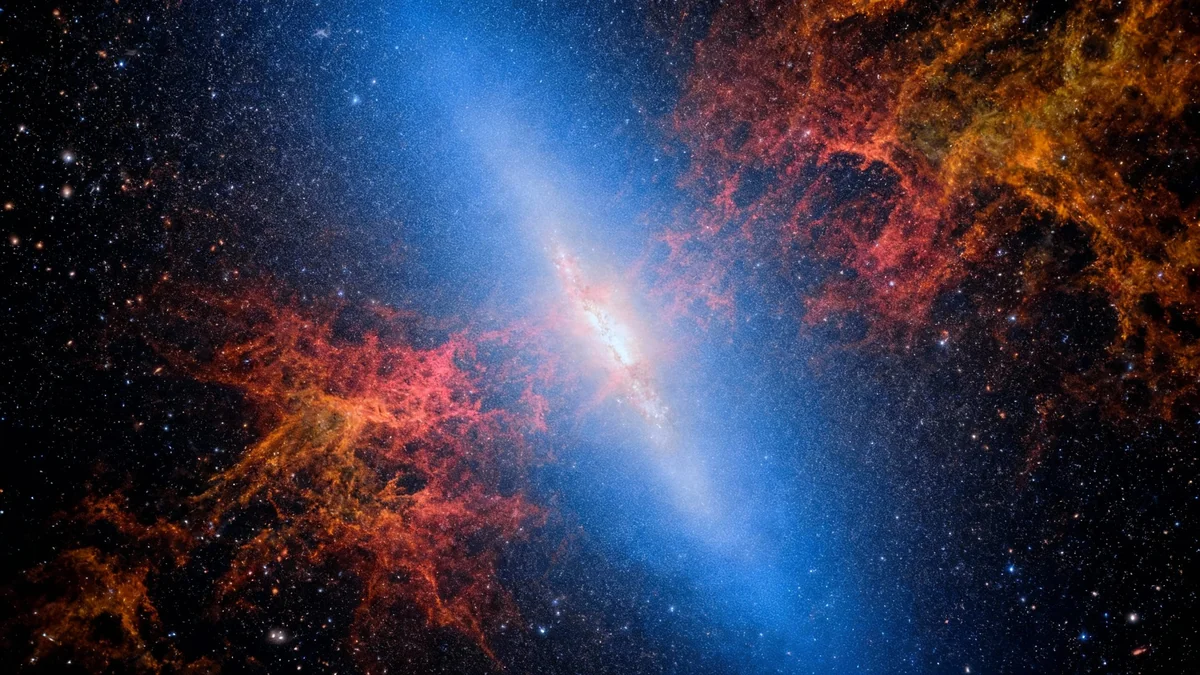A moderate geomagnetic storm is forecast to impact Earth tonight, potentially making the northern lights visible across 15 states in the northern United States. The National Oceanic and Atmospheric Administration (NOAA) has issued a G2 storm watch following a series of solar events.
The celestial display, also known as the aurora borealis, could be seen farther south than usual due to multiple coronal mass ejections (CMEs) from the sun. The strongest effects are anticipated late Thursday night into the early hours of Friday morning, offering a potential skywatching opportunity for millions.
Key Takeaways
- A G2 (moderate) geomagnetic storm watch is in effect for October 16-17.
- The aurora borealis may be visible in 15 northern U.S. states, including Idaho, Michigan, and Maine.
- The storm is caused by several coronal mass ejections (CMEs) that left the sun earlier this week.
- Optimal viewing conditions require clear, dark skies away from city lights, with a clear view of the northern horizon.
Geomagnetic Storm Conditions Expected
NOAA's Space Weather Prediction Center (SWPC) is tracking the effects of recent solar activity. The agency issued a G2 geomagnetic storm watch, indicating a moderate level of disturbance in Earth's magnetic field. Such events are known to enhance the visibility and geographic reach of the aurora.
The forecast predicts the storm will peak in intensity between 5 p.m. and 11 p.m. Eastern Daylight Time (21:00 and 03:00 GMT). During this window, the planetary Kp index, a measure of geomagnetic activity, is expected to reach 5.67. A Kp index of 5 or higher is generally considered a geomagnetic storm, making auroral displays more likely.
What is a G2 Storm?
Geomagnetic storms are ranked on a scale from G1 (minor) to G5 (extreme). A G2 storm is considered moderate and can cause voltage alarms in high-latitude power systems and may require corrective actions for spacecraft orientation. For the public, its most notable effect is the potential for aurora sightings at lower latitudes.
Potential Viewing Locations Across the U.S.
Based on the SWPC's forecast model, the aurora's view line could extend over parts of 15 states. Residents in these areas may have a chance to witness the phenomenon, provided local weather conditions are favorable.
States Within the Aurora View Line
The following states are either fully or partially within the predicted viewing area:
- Alaska
- Washington
- Idaho
- Montana
- North Dakota
- South Dakota
- Minnesota
- Wisconsin
- Michigan
- Wyoming
- Iowa
- New York
- New Hampshire
- Vermont
- Maine
It is important to note that the view line represents the southernmost extent where the aurora might be visible on the horizon. The display will be more prominent for observers located farther north within these states.
The Solar Origin of the Aurora
This anticipated auroral activity is a direct result of events on the sun. The current forecast is linked to the arrival of multiple CMEs that were launched from the sun between October 11 and October 13. A CME is a significant release of plasma and magnetic field from the sun's corona.
What is a Coronal Mass Ejection?
A CME is a massive burst of solar wind and magnetic fields that rises above the sun's surface and can be ejected into space. If a CME is directed toward Earth, its charged particles can interact with our planet's magnetosphere, triggering geomagnetic storms that produce auroras.
When multiple CMEs arrive in close succession, they can create a "stacked" impact. This cumulative effect can cause a more significant and prolonged disturbance to Earth's magnetic field than a single CME would. This is what space weather forecasters believe may happen tonight, increasing the likelihood of a strong auroral display.
"The combined arrival of several CMEs in close succession could result in a 'stacked' impact, a cumulative disturbance to Earth's magnetic field that makes heightened geomagnetic activity more likely."
This activity is part of the sun's natural 11-year cycle. We are currently in Solar Cycle 25, which is approaching its peak, known as the solar maximum. During this period, solar flares and CMEs become more frequent and intense, leading to more regular space weather events and aurora sightings.
How to Maximize Your Viewing Chances
Seeing the aurora is never a guarantee, as it depends on the storm's intensity and local conditions. However, following a few key steps can significantly improve your chances of catching the show.
Tips for Aurora Chasers
- Escape Light Pollution: The most critical factor is getting away from city lights. Find a location with a dark sky, such as a rural area, park, or designated dark-sky preserve.
- Look North: The aurora typically appears on the northern horizon, especially for viewers at lower latitudes. Find a spot with an unobstructed view to the north.
- Check the Weather: Clear, cloudless skies are essential. A forecast for clear conditions is just as important as the space weather forecast itself.
- Be Patient and Time It Right: While the storm may peak earlier, the best viewing times are often between midnight and 2 a.m. local time when the sky is darkest. Auroras can appear in waves, so plan to stay for a while.
- Use Technology: Several smartphone apps can provide real-time aurora forecasts and alerts for your specific location. Apps like "My Aurora Forecast & Alerts" and "Space Weather Live" offer data on Kp index, solar wind speed, and other useful metrics.
Even with a strong storm, the aurora can initially appear as a faint, greyish arc to the naked eye, sometimes mistaken for a cloud. Allow your eyes at least 15-20 minutes to adjust to the darkness. This will help you detect the subtle colors and movements of the display.





